
Weevils are beetles belonging to the superfamily Curculionoidea, known for their elongated snouts. They are usually small – less than 6 mm in length – and herbivorous. Approximately 97,000 species of weevils are known. They belong to several families, with most of them in the family Curculionidae. It also includes bark beetles, which while morphologically dissimilar to other weevils in lacking the distinctive snout, is a subfamily of Curculionidae. Some other beetles, although not closely related, bear the name "weevil", such as the biscuit weevil, which belongs to the family Ptinidae.
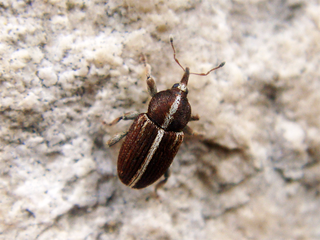
The beetle subfamily Curculioninae is part of the weevil family Curculionidae. It contains over 23,500 described species in 2,200 genera, and is therefore the largest weevil subfamily. Given that the beetle order (Coleoptera) contains about one-quarter of all known organisms, the Curculioninae represent one of the – if not the – most successful radiations of terrestrial Metazoa.

The Megalopodidae are a small family of leaf beetles, previously included as a subfamily within the Chrysomelidae. One of its constituent subfamilies, Zeugophorinae, has also frequently been treated as a subfamily within Chrysomelidae. The family contains approximately 30 genera worldwide, primarily in the nominate subfamily Megalopodinae, and mostly circumtropical.
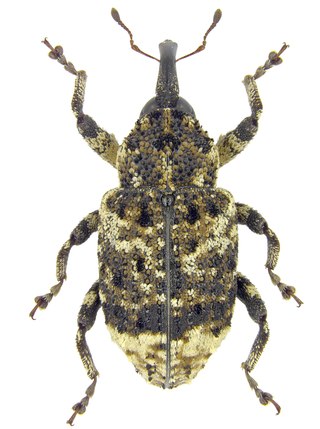
Cryptorhynchinae is a large subfamily of weevils (Curculionidae), with some 6000 species. They are found in most zoogeographic regions although they are most diverse in the Neotropics, Australia and Oceania.
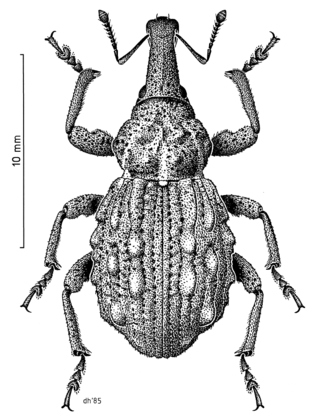
Hadramphus tuberculatus is a rare weevil endemic to Canterbury in the South Island of New Zealand. It was thought to be extinct in 1922 but was rediscovered in 2004.

Hadramphus, commonly known as knobbled weevils, is a genus of flightless molytine weevils from the family Curculionidae. It is endemic to New Zealand and consists of four species.

Storeini, or flower weevils, is a tribe of true weevils (Curculionidae). The taxonomy of this poorly known group is in disarray, and there are many contradictory sources of information about it.
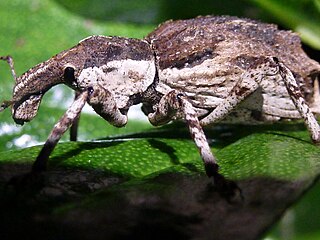
Anagotus stephenensis, commonly known as the ngaio weevil, is a large flightless weevil that is only found on Stephens Island in New Zealand. The ngaio weevil was discovered in 1916 by A.C. O'Connor on Stephens Island. Thomas Broun described it in 1921 as Phaeophanus oconnori after its collector. The weevils were observed at the time to be 'feeding on tall fescue and the leaves of trees'.

Cossoninae is a true weevil subfamily in the family Curculionidae.
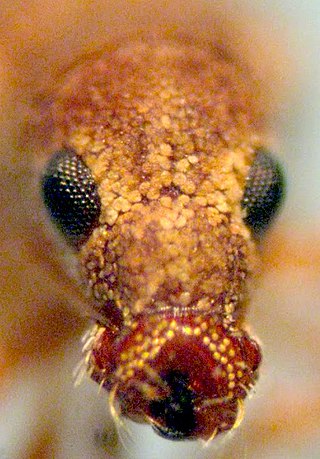
The Anypotactini are a Neotropical weevil tribe in the subfamily Entiminae. It includes 81 described species.

Ectemnorhinini is a weevil tribe in the subfamily Entiminae.

Eustylini is a primarily Neotropical weevil tribe in the subfamily Entiminae.
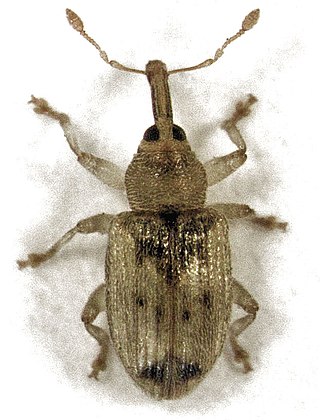
Peristoreus stramineus is a species of true weevil. It is endemic to New Zealand. The larvae develop in flower buds of Hoheria populnea.
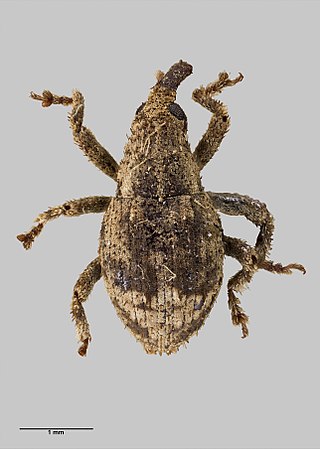
Didymus is a genus of beetles known as weevils. The genus contains the following species:

Kenocoelus is a genus of rove beetles containing a number of species, all endemic to New Zealand. It is part of the Trichonychini tribe, in the Pselaphinae subfamily of Staphylinidae.

Anthribinae is a subfamily of fungus weevils in the family of beetles known as Anthribidae. There are over 50 genera and more than 80 described species in Anthribinae.

Artipus is a genus of broad-nosed weevils in the beetle family Curculionidae. There are about 10 described species in Artipus.

Mesoptiliinae is a subfamily of true weevils in the family Curculionidae. There are at about 23 genera and 40 described species in Mesoptiliinae.

Helmoreus is a genus of fungus weevil which was circumscribed by the New Zealand entomologist Beverley Holloway in 1982. The generic name honors the scientific illustrator Des Helmore. It is found in New Zealand, Australia, and New Caledonia. It is in the tribe Stenocerini.
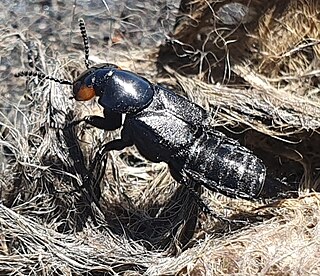
Creophilus oculatus or devil's coach horse is a species of large carrion-feeding rove beetle endemic to New Zealand.




















